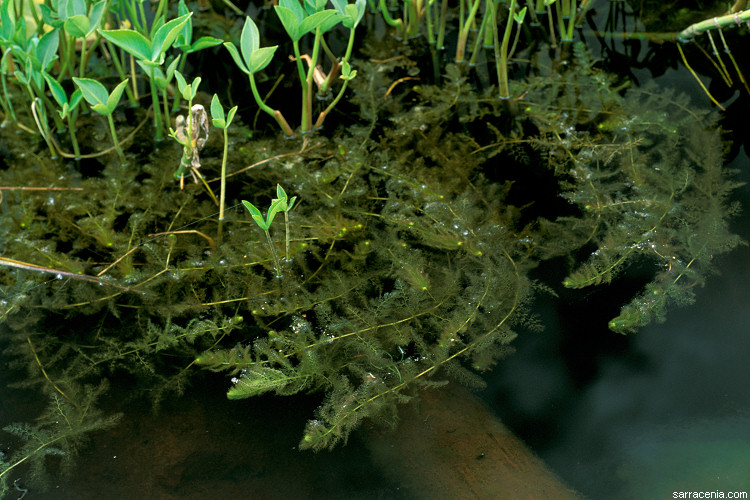
Bladderworts:
Enough of the sundews. Time to talk about
the bladderworts. This lake is famous among carnivorous plant botanists
because of the rich flora of Utricularia. Starting with the basics,
this is Utricularia macrorhiza.
I have to admit a petty, childish frustration I had on this trip. After I
finished the Drosera photography, Beth and
I simultaneously started foraging for
Utricularia. The water was a little low and the hunting was hard.
She found her first sprig of Utricularia before I did. What's
with that!? I mean, I'm the Utricularia guy, not her! But I stifled my
irritation and smiled graciously.
"Excellent! First find for the day! Good for you!"
Grrrrrr.
This is Utricularia macrorhiza, the western USA's largest native
species. Even out of flower, it is easily identified by five
characteristics.
1: It is a free-floating species usually in water deeper than 30cm.
2: It has large leaves that are divided into
40 or so ultimate leaf tips.
3: The shoots are all mostly the same in that they are
green, free-floating, leafy, and bear bladders.
4: The terminal leaflet tips are threadlike (capillary) and
not flattened.
5: Viewed under a microscope, the terminal leaflet
segments have tiny needlelike hairs (setulae) on the margins and on the
leaf tip. Once you are familiar with what these look like, you can see them
with a hand lens or even with your naked eye (if you are nearsighted like
me).
You must be a little careful when identifying this plant, by the way,
because stressed specimens may look weird, and have small leaves without
many divisions. Still, even on environmentally mutated specimens,
characters 4-5 above are reliable.
(Utricularia macrorhiza can also easily be identified by
flowering characteristics
or by the nature of the
"quadrifid glands" in the bladder--if you have access to a compound
microscope, that is.)